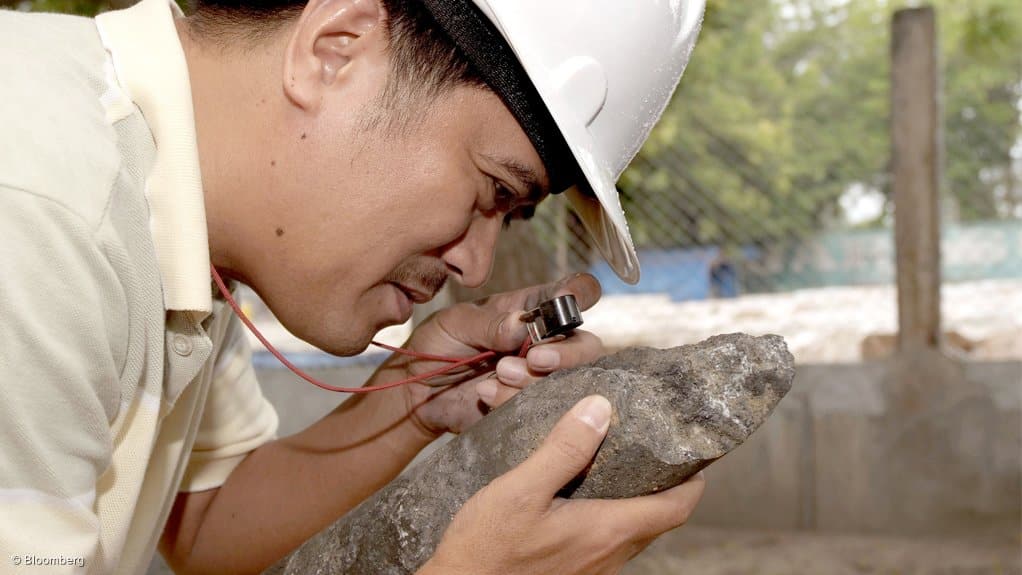Work by Geoscience Australia and state and geological surveys has contributed around A$76-billion to the Australian economy in 2021/22 through the resource exploration and extraction sectors, a new report by Deloitte Access Economics found.
The value-add of the precompetitive geoscience data and analysis supported the equivalent of 3.5% of Australia’s gross domestic product (GDP) in the year under review, and the report noted that over 80 000 full-time jobs were created by this work in the 2021/22 financial year.
“The resources industry, which includes mining, oil and gas and exploration and mining services, accounted for 18% of Australia’s GDP and employed 200 000 people in 2021/22. This success is driven by a significant resource endowment, a skilled labour force, substantial capital investment, and the availability of world class precompetitive geoscience data and analysis that supports the resources industry in discovering and extracting resources,” the report stated.
Minister for Resources and Northern Australia Madeleine King said that with up to 80% of Australia under-explored, the Australian government was in a unique position to help facilitate the discovery of materials essential for the global clean energy transition.
“Our government knows that the path to net zero runs through the resources industry. That is why providing the sector with the tools they need to make exploration and discovery as easy as possible is essential,” King said.
“Locating the minerals the world needs right now to produce clean energy technologies such as wind turbines, solar panels and electric vehicle batteries has never been more urgent.
“Given the odds of making a successful discovery during exploration are estimated to be around 1 in 1 000, providing better information through government funding for new data and analysis allows us to improve those odds and reduce ecological disturbances through better-targeted exploration.
“Precompetitive geoscience data and analysis has supported projects that have generated close to A$3.7-billion in royalty payments for the year 2021/22 and 3.5% of Australia’s GDP.
“That economic impact has been felt right across the country,” she added.
The report estimated that precompetitive geoscience data and analysis added A$40.2-billion in value to Western Australia during the year under review, A$19.3-billion to Queensland, A$5.5-billion to the Northern Territory, A$4-billion to Victoria, A$3.6-billion to South Australia, A$3.2-billion to New South Wales and A$0.2-billion to Tasmania.
King said on Wednesday that Geoscience Australia’s Exploring for the Future (EFTF) programme was the Australian government’s “shining light” of precompetitive geoscience data and analysis.
“The EFTF programme is Australia’s largest investment in precompetitive geoscience data and analysis and uses a wide range of methods to map Australia’s mineral, energy and groundwater resource potential, revealing exciting opportunities to make new discoveries,” King said.
“Since 2017, precompetitive geoscience has resulted in the uptake of 825 new tenements across Australia by 110 companies.”
She noted that the report was evidence that the Australian government’s approach to investing in precompetitive geoscience and analysis was paying dividends.
“The numbers are in, and it is clear – the work of Geoscience Australia through EFTF and other similar initiatives by states and territories, is having a direct, positive impact.”
Geoscience Australia has 10-year targets to map and understand Australia’s energy resources, stimulate resource exploration to help develop new resource production provinces and advance clean energy technologies to reach Australia’s emissions targets.
The report further noted that the rapid deployment of low-carbon technologies would dramatically increase the demand for energy transition minerals. Meeting this demand would require continued exploration to identify new opportunities for mineral supply, meaning precompetitive geoscience data and analysis would play an essential role in enabling Australia to take advantage of the global critical minerals demand.
“According to the Australian government’s Critical Minerals Strategy, capitalising on this resource endowment could see exports of energy transition minerals add over A$70-billion in GDP and 115 000 jobs to the economy from 2022 to 2040. Meanwhile, developing domestic processing capability for these minerals offers an even larger economic opportunity. This new sector could generate almost A$140-billion in GDP and more than a quarter of a million jobs from 2022 to 2040,” the report stated.



